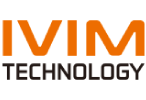The whole-slide, highly multiplexed biomarker imaging platform - depth and flexibility with the convenience of a comprehensive, rapid, single cycle process.
Automated microscopy and Spatial Proteomics
Automated microscopy and image analysis
Discover
Related topics
Column-Free CD14+ Monocyte Isolation using 50nm Superparamagentic Beads on MARS® Bar

Apr 25, 2024
The MARS® Bar Magnetic Separation Platform is a closed and automated isolation for cell therapy development and...
Spatial and temporal profiling of the complement system uncovered novel functions of the alternative

Apr 24, 2024
Mounting evidence implicated the classical complement pathway (CP) in normal brain development, and the pathogenesis of...
The chicken chorioallantoic membrane as a low-cost, high-throughput model for cancer imaging

Apr 4, 2024
Here, we assessed the chicken chorioallantoic membrane (CAM) as an alternative to mice for preclinical cancer imaging...
A microthrombus-driven fixed-point cleaved nanosystem for preventing post-thrombolysis recurrence

Apr 3, 2024
A thrombin-responsive and fixed-point cleaved Fu@pep-CLipo was developed for highly efficient and precise thrombolysis...
Multiplexed tissue imaging using the Orion platform to reveal the Spatial Biology of Cancer

Mar 27, 2024
In this webinar Prof. Sandro Santagata, will reveal how Orion high-plex imaging and the use of this data, is valuable...

Mar 22, 2024
Mission Bio’s Tapestri Tool May Hold the Key to Informing Treatment Options for Multiple Myeloma.
A 19-color single-tube Full Spectrum Flow Cytometry for the detection of Acute Myeloid Leukemia

Mar 13, 2024
This recent publication in Cytometry Part A describes the development and comprehensive workflow of a single-tube,...
18F-labeled somatostatin analogs for somatostatin receptors (SSTRs) targeted PET imaging of NETs

Mar 11, 2024
A novel 18F-radiolabeled somatostatin analogue, [Al18F]NODA-MPAA-HTA, was synthesized and evaluated for positron...
Discover Yokogawa CellVoyager CQ1: Benchtop High-Content Analysis System

Mar 8, 2024
Unlike flow cytometers, the CellVoyager CQ1 confocal quantitative image cytometer does not require pretreatment such as...
Real-time and quantitative analysis of Macrophage Phagocytosis with RTCA eSight

Feb 23, 2024
The eSight is currently the only instrument that interrogates cell health and behavior using cellular
impedance...

Aug 7, 2023
Precision medicine is critically dependent on better methods for diagnosing and staging disease and predicting drug response. Histopathology using hematoxylin and eosin (H&E)-stained tissue (not genomics) remains the primary diagnostic method in cancer. Recently developed highly multiplexed tissue imaging methods promise to enhance research studies and clinical practice with precise, spatially resolved single-cell data. Here, we describe the ‘Orion’ platform for collecting H&E and high-plex immunofluorescence images from the same cells in a whole-slide format suitable for diagnosis. Using a retrospective cohort of 74 colorectal cancer resections, we show that immunofluorescence and H&E images provide human experts and machine learning algorithms with complementary information that can be used to generate interpretable, multiplexed image-based models predictive of progression-free survival. Combining models of immune infiltration and tumor-intrinsic features achieves a 10- to 20-fold discrimination between rapid and slow (or no) progression, demonstrating the ability of multimodal tissue imaging to generate high-performance biomarkers.
Related technologies: Automated microscopy and image analysis
Get more info
Brand profile
The whole-slide, highly multiplexed biomarker imaging platform - depth and flexibility with the convenience of a comprehensive, rapid, single cycle process.
More info at:
https://rarecyte.com/